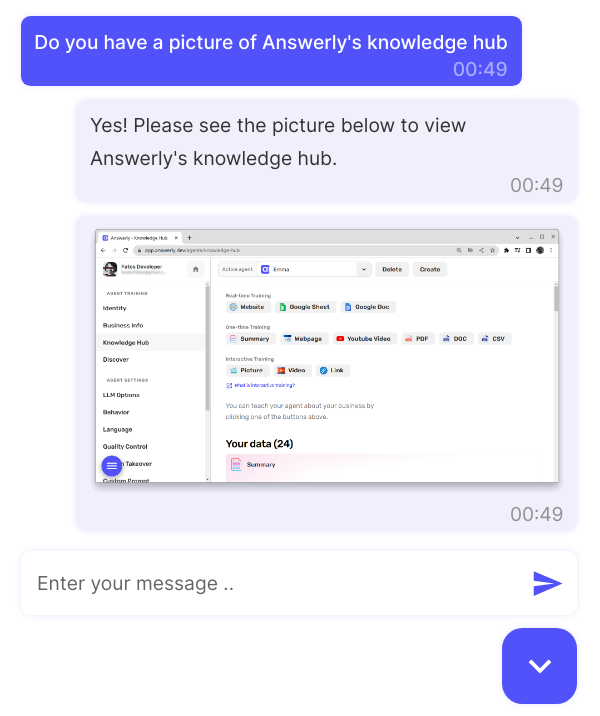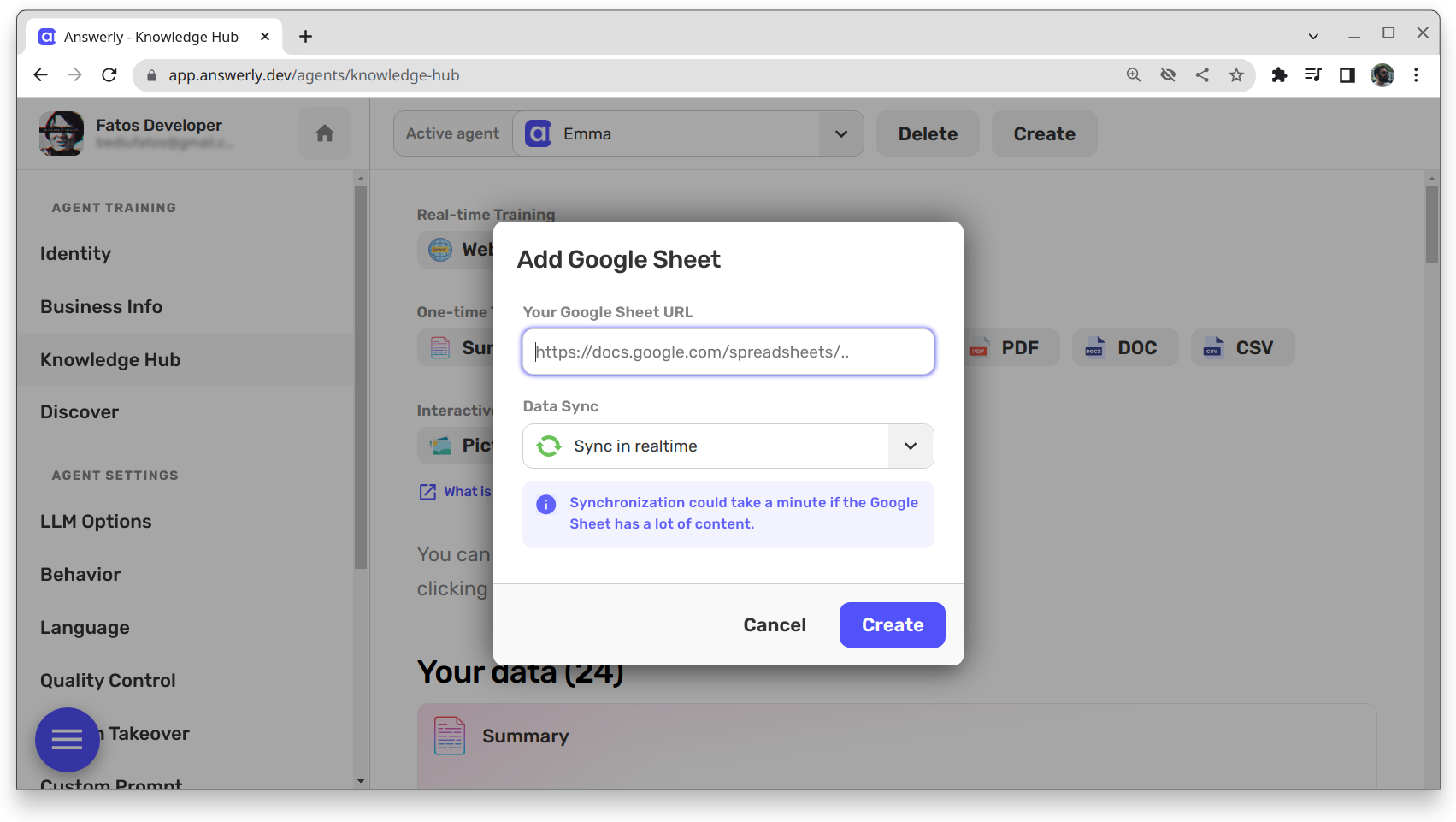Getting Started
Training your Agent with the Knowledge Hub
Hello! 😊 Learning made easy, that's our motto at Answerly. And it's all possible because of our Knowledge Hub.
Think of the Knowledge Hub as your agent's brain - everything your agent knows, it's because it learned it from here.
Accessing the Knowledge Hub is pretty straightforward. Simply click on this link and voila!

Now, it's important to note that each of your agents has their own unique Knowledge Hub. This way you can customize each one based on their particular task.
Once inside, you'll be presented with three data sets:
- Realtime
- One-time
- Interactive
Real-time Datasets
Realtime data sets are the live wires. Whenever you edit these data sets from their source, the updates will automatically sync with your agent.
For instance, if you integrate a Google Sheet, this ensures that the data in the sheet remains in sync with your Agent, even after you edit the Google Sheet after.

Nifty huh? To know more about Realtime data sets, check out this link.
One-time Datasets
Just as the name suggests, these data sets are for one-time use in training the agent; they do not provide real-time information.
For example, if you have a PDF file or a Word document on your computer, you can upload it, and the agent can be trained using the data from that document.

Check out more about One-time data sets here.
Interactive Datasets
Finally, we have the Interactive data sets. These are completely unique and grant your agent the ability to embed pictures, videos, etc directly into a conversation. This can come in super handy when helping a user.
Take the picture data set:

The way it works is you upload a picture, and describe what the picture is about. By describing the picture, this gives the Agent the ability to understand what's in the picture, and therefore use it in an answer.

Learn more about Interactive training right here.
So once you're all set and comfortable with the Knowledge Hub, you'll notice different data set types that you can create for your agent.
Creating a Dataset
Clicking on each will open a dialog box, asking you to either insert or upload your data. For instance, for Google Sheet, you'll be asked to provide the URL.

Browsing your Datasets
Beneath all this, you'll find a feed of all the datasets you've added. Each item is color-coded and clearly marked for your convenience, with information about its data type and last synced time.

In a nutshell, that's pretty much about the Knowledge Hub. Remember, it's all about maintaining your data sets to keep your agent up-to-date with everything it needs to help your users!
Keep learning, keep exploring! 😄

